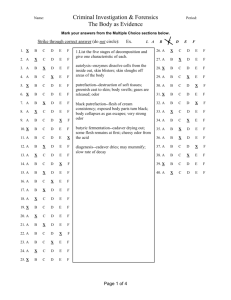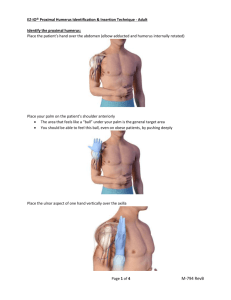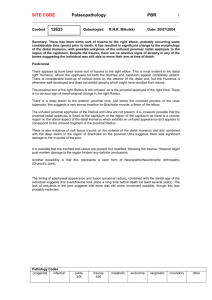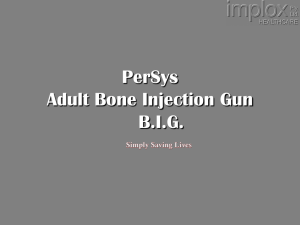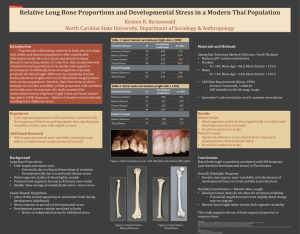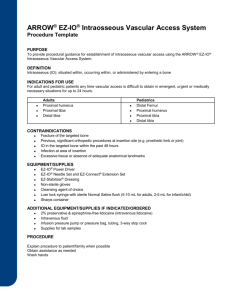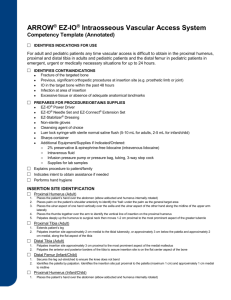EZ-IO ® Powerpoint presentation
advertisement
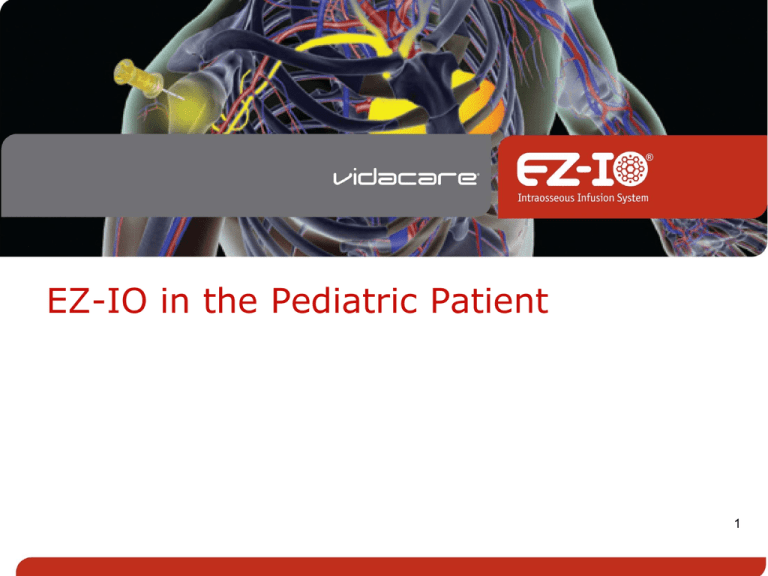
EZ-IO in the Pediatric Patient 1 • This presentation is only for Pediatric specific IO site location and placement. For complete IO insertion education, please refer to the website www.vidacare.com T- 509 2 Insertion sites Proximal Humerus Proximal Humerus Proximal Tibia Proximal Tibia Distal Tibia Distal Tibia T- 509 3 Proximal tibia • 2 fingerbreadths below base of patella and 1 fingerbreadth medial T- 509 4 Proximal tibia • Pinch the sides of the tibia bone between your fingers and isolate the proximal tibia T- 509 5 Ability to locate accurate site on proximal tibia If Tibial Tuberosity cannot be palpated T- 509 then find base of patella 6 Ability to locate accurate site on distal tibia • Place one finger directly over the medial malleolus • Move 2 fingerbreadths proximal • Palpate anterior and posterior tibia borders to confirm the flat center aspect of the bone T- 509 7 Proximal humerus • Should only be used in patients whose landmarks can clearly be identified surgical neck T- 509 8 Ability to locate accurate site on proximal humerus Elbow should remain adducted & posteriorly located Place the hand over the umbilicus for humeral positioning and safety T- 509 9 Ability to locate accurate site on proximal humerus • Use the thumb to palpate up the humerus until a notch/groove is felt • Insertion site is approximately 1 cm above the site. At the most prominent point T- 509 10 Pediatric EZ-IO insertion sites Proximal Tibia T- 509 Distal Tibia Proximal Humerus 11 STEP-BY-STEP PROCEDURE T- 509 12 • Chose appropriate insertion site • Identify the site by palpation T- 509 13 • Primary Consider tissue depth PRIOR to bone insertion • Chose appropriate needle - 15, 25 or 45 mm • Special situations – Excessive soft tissue – Excessive muscle tissue – Edema T- 509 14 • Prime EZ-Connect with Saline • Consider Lidocaine* if awake • Clean insertion site with antiseptic • Place needle on driver • Remove needle safety cap T- 509 15 • Press needle set through skin until tip touches bone • At least 5 mm of the cathether must be visible T- 509 16 • Squeeze Driver trigger • Apply gentle, steady pressure • Immediately release trigger when sudden ”give” or ”pop” is felt indicates entry into the medullary cavity • STOP WHEN YOU FEEL THE POP T- 509 17 • Remove Driver and stylet • Use of stabilizer is strongly recommended for pediatrics T- 509 18 • Attach primed EZ-Connect • Flush with normal saline NO FLUSH. NO FLOW. • For patients responsive to pain,consider administering 2% lidocaine prior to flush T- 509 19 20 T- 509 • Confirm placement with at least 3 of 4 methods – Stability of catheter – Ability to aspirate – Physiological or pharmacologic changes – Adequate flow rate T- 509 21 • Apply EZ-IO wristband • Do not leave catheter inserted for more than 24 hours • NOTE! Monitor insertion site frequently for extravasation T- 509 22
